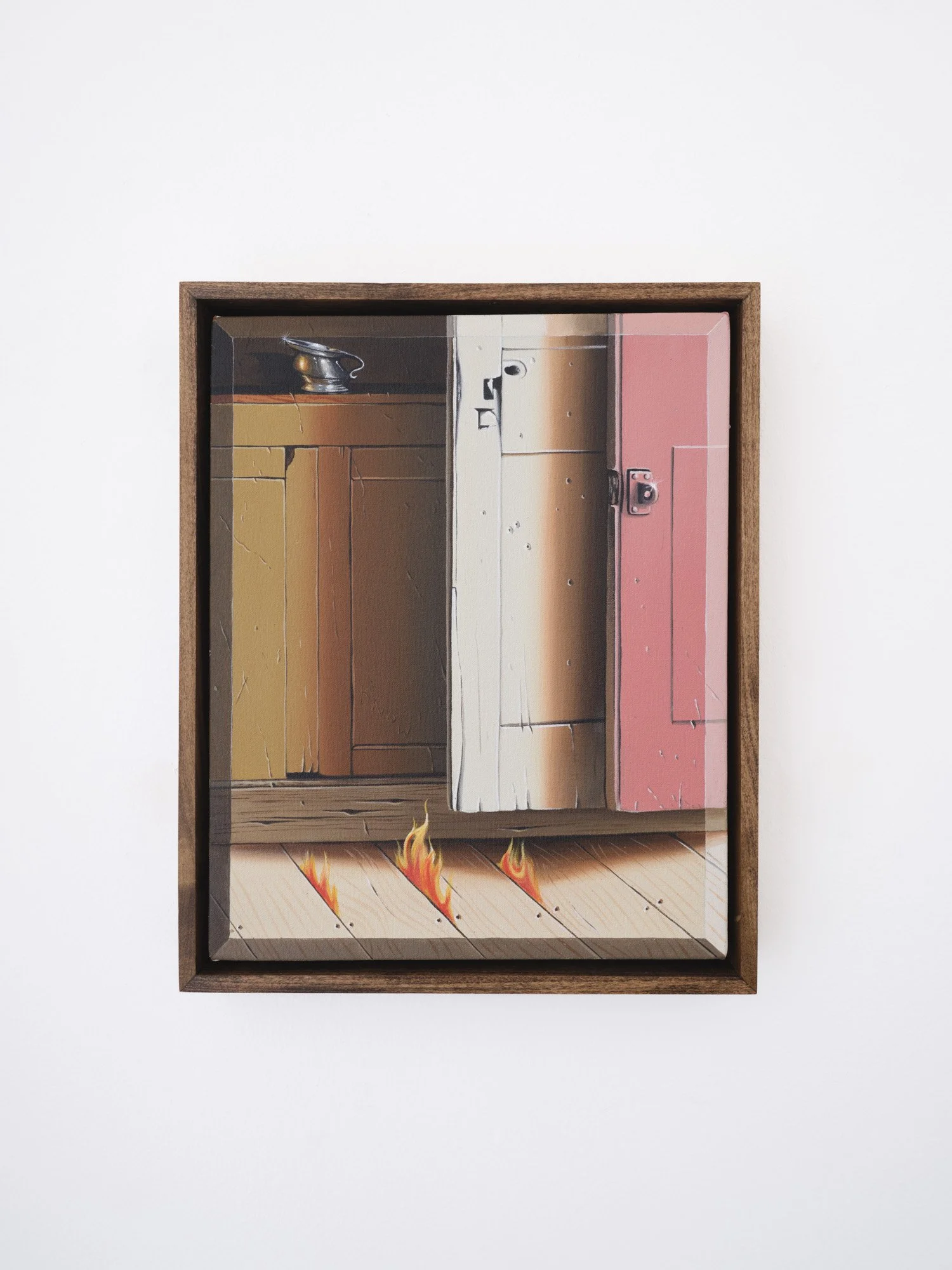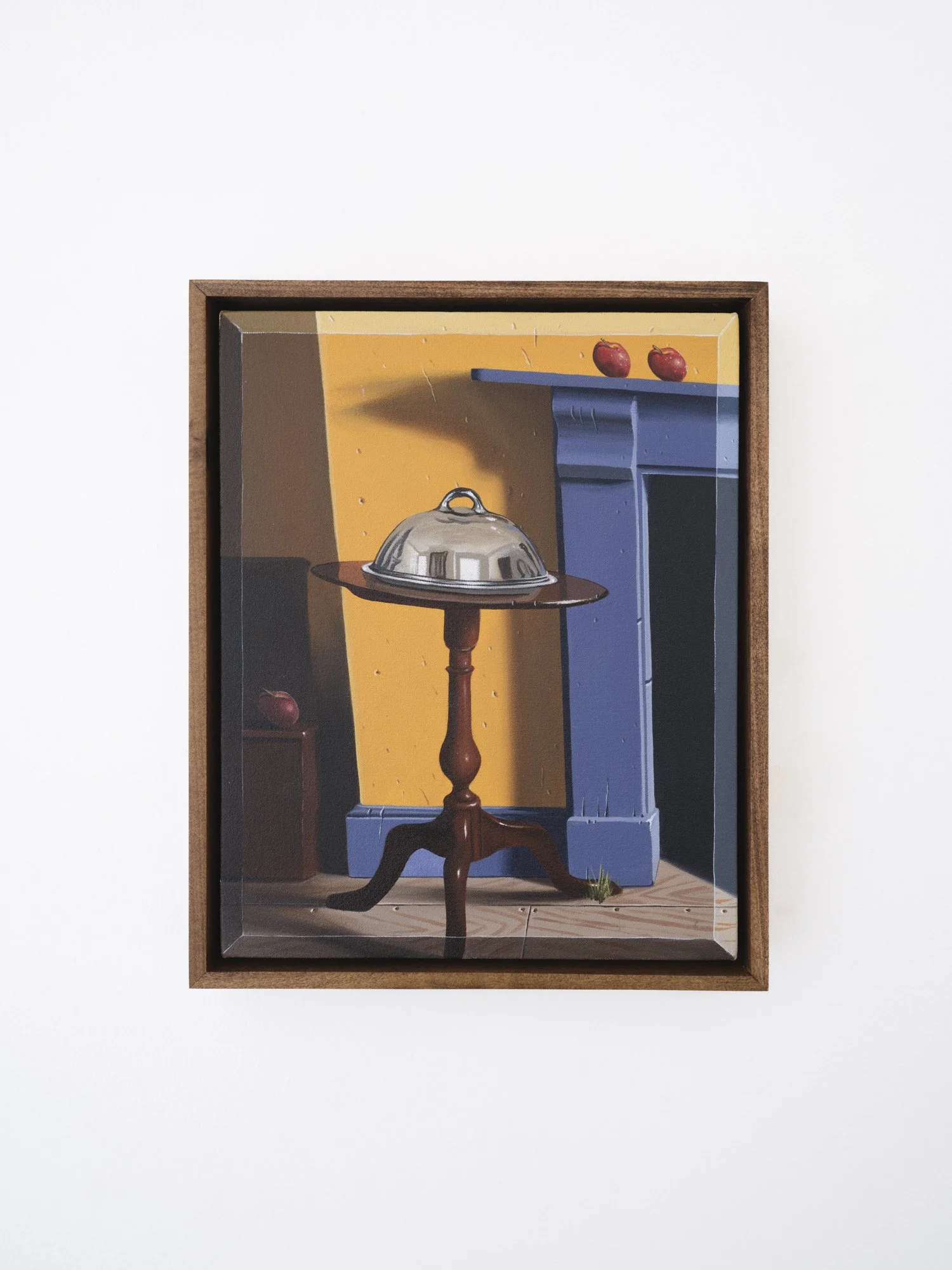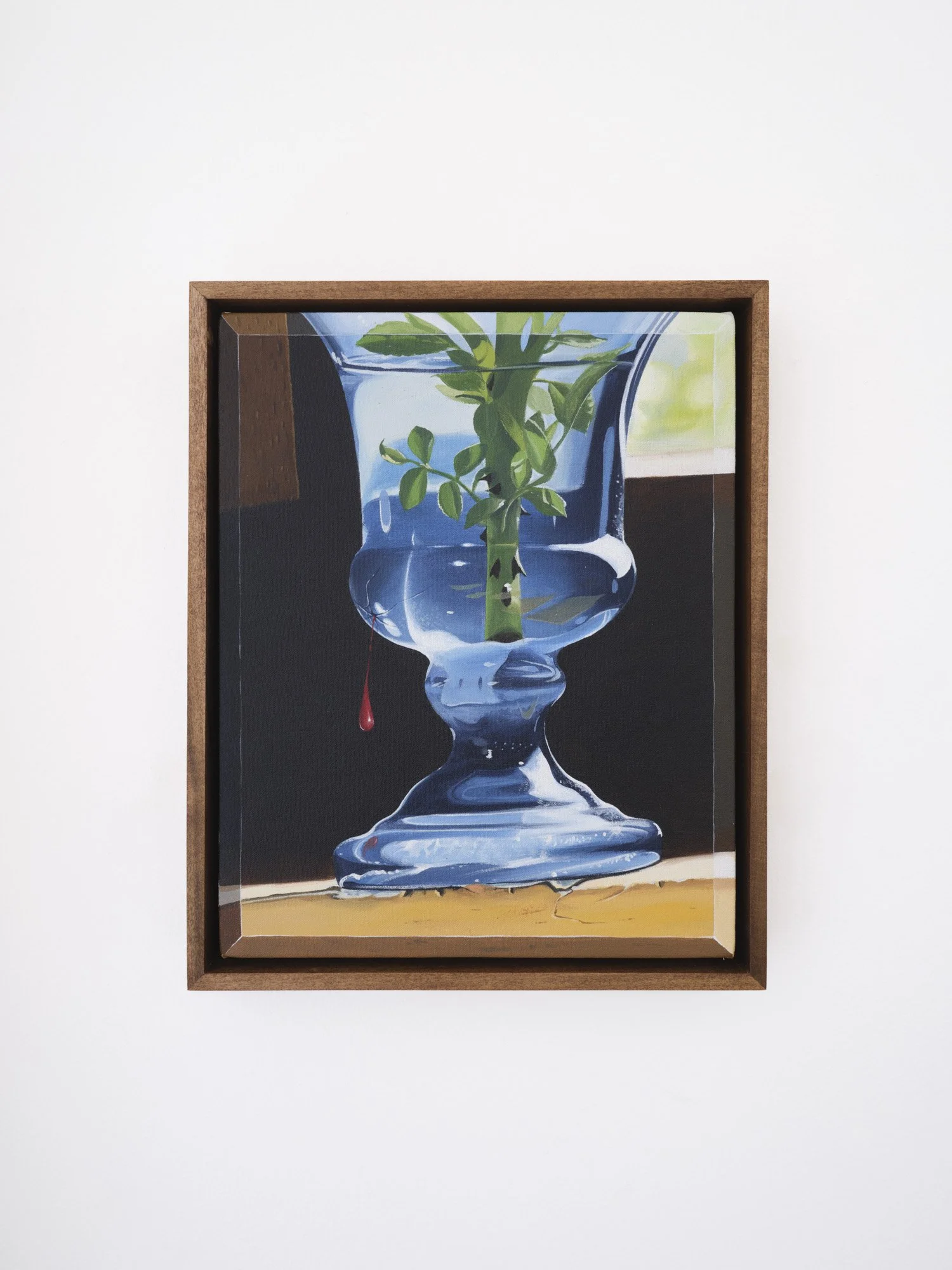


Conner O’Leary’s
Vessel in Time
June 6 -July 19, 2025
Conner O’Leary’s paintings are clearly in a lineage of surrealism, but they are also influenced by Northern European Genre Painting, a school from the 16th and 17th century characterized by exquisite renderings of the everyday by such masters such as Bruegel and van Eyck. At the time, genre painting was ranked below portraiture of nobles and paintings of history and mythology, deemed less important because of its subject matter. In the centuries since, we correctly no longer categorize art’s importance on its literal subject matter but instead on some amalgam of skill, imagination, intellect, and aura. In Vessel in Time, O’Leary’s visual fluency is robust, and his careful, burnished hyperreal still lifes fit comfortably in an esteemed history of painting yet have their own unique and uncanny charge. O’Leary collides a high level of figurative skill with fantastical and dream-like details—a drop of blood falling from a cracked vase, flames neatly rising from floorboards, a floating hammer, an egg-lemon hybrid elegantly cracked for an Ikebana-like floral arrangement. These paintings are aesthetically beguiling but suffused with something more, some ineffable question, or as Leonard Bernstein once said, “A work of art does not answer questions, it provokes them; and its essential meaning is the tension between the contradictory answers.” In Jorge Luis Borges’ brilliant vignette Inferno I, 32 a leopard, imprisoned in medieval Italy, and the poet Dante Alighieri are visited by god in dreams and informed of their important roles in the song of humanity—the leopard for giving Dante a new and vibrant visual metaphor, and Dante for giving the world a timeless epic of love and mortality. But neither can truly grasp the message upon waking: “because the machine of the world is exceedingly complex for the simplicity of a savage beast; because the machine of the world is exceedingly complex for the simplicity of men.” O’Leary’s paintings are an attempt at the schematics of such a complex and inscrutable machine.
Text by Neil Fauerso
Conner O'Leary
Vessel in Time, Blessed Avoidance 2025
Acrylic on canvas stretched over panel, framed
48 x 72 inches
Conner O'Leary
Reclining Nude 2, 2025
Acrylic on canvas stretched over panel
36 x 48 inches
Conner O'Leary
Shelter, 2025, 2025
Acrylic on canvas stretched over panel
15 x 12 inches
Conner O'Leary
Cipher Reveal, 2025
Acrylic on canvas stretched over panel
15 x 12 inches
Conner O'Leary
Worship Reveal, 2025
Acrylic on canvas stretched over panel
15 x 12 inches
Conner O'Leary
The Altar, 2025
Acrylic on canvas stretched over panel
15 x 12 inches
Conner O'Leary
Vision III, 2025
Acrylic on canvas stretched over panel
15 x 12 inches
Conner O'Leary
Conquer, 2025
Acrylic on canvas stretched over panel
15 x 12 inches
Conner O'Leary
Interior Transmutation, 2025
Acrylic on canvas stretched over panel
15 x 12 inches
Conner O'Leary
Grow Without, 2025
Acrylic on canvas stretched over panel
15 x 12 inches










